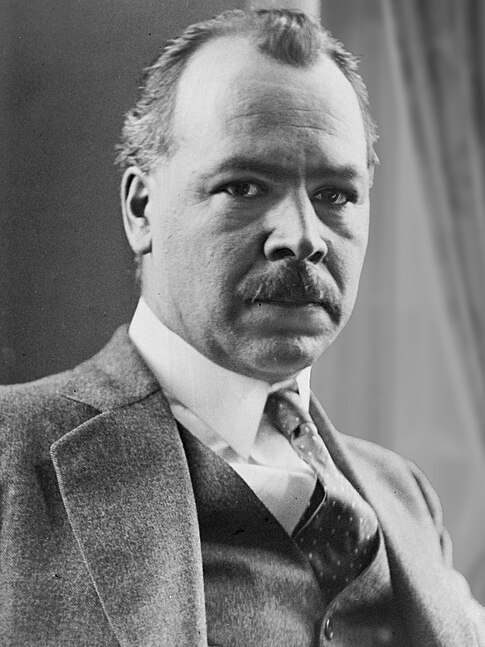Botany: A Blooming History
The last episode of the series by Timothy Walker majored on the exploits of noble scientists whose aim was
Feeding the World
 The first of these is Nikolái Ivánovich Vavílov (Russian: Никола́й Ива́нович Вави́лов) (1887 – 1943) who was
The first of these is Nikolái Ivánovich Vavílov (Russian: Никола́й Ива́нович Вави́лов) (1887 – 1943) who was
a prominent Russian and Soviet botanist and geneticist best known for having identified the centres of origin of cultivated plants. He devoted his life to the study and improvement of wheat, corn, and other cereal crops that sustain the global population.
Even before the Russian revolution, he was a hardy plant collector, having brought back in 1916 material from Iran and Central Asia. This expedition had nearly cost him his life, owing to an accident in the rough terrain. Previously, he had travelled in Europe with the British geneticist William Bateson, and like him was convinced of Mendelian inheritance.
Then came the revolution, and worse to come, in 1924 Stalin assumed power.
Vavílov developed his theory on the centres of origin of cultivated plants, and organized a series of botanical-agronomic expeditions, collecting seeds from every corner of the globe, and with these he created in Leningrad the world's largest collection of plant seeds. In 1926 he receives the Lenin Prize.
I will now turn to Timothy Walker’s dramatic narrative:
« By 1929 the USSR is under the control of Joseph Stalin. Stalin doesn’t understand science. He has no patience with the likes of Vavílov. He insists the USSR needs methods to increase crop yields that make a difference tomorrow, not in ten years’ time.
Stalin’s men say genes do not exist. Only the environment in which a plant grows up is important. It fits Marxist ideology beautifully. Breeding and birthright count for nothing. Genetics, they say, is bourgeois Western propaganda.
And slowly, Soviet geneticists realize that their science is a political liability.
These are dangerous times. At the age of 45, Vavílov has invested decades in his great genetic project. Then disaster strikes. A series of catastrophic harvests hits the USSR. Stalin is looking for a scapegoat. Vavílov runs several agricultural institutions. He’s the perfect target.»
And who aimed the gun?
Reading Vavílov’s Wikipedia biography, one comes across this: mid 1920s – Vavílov befriends the young peasant Trofim Lysenko and begins taking him to scientific meetings. For Stalin’s men above, read Trofim Lysenko (1898 –1976). Lysenko rejected Mendelian genetics in favour of the hybridization theories of Russian horticulturist Ivan Vladimirovich Michurin, and adopted them into a powerful political-scientific movement termed Lysenkoism.
But his seedbank survives. Hidden underground, it was diligently preserved even throughout the 28-month Siege of Leningrad (8 September 1941 – 27 January 1944), despite starvation; one of Nikolai's assistants starved to death surrounded by edible seeds.

We have also read: A series of catastrophic harvests hits the USSR. With Vavílov being aged 45, that corresponds to the Soviet famine of 1932-1933, understood to have been brought about by forced collectivization, and including the Holodomor, which is Ukrainian for “hungry mass death”, where relief was prohibited by the state.

I will now shift up a gear, and move quickly to Norman Ernest Borlaug (1914 – 2009), known as the “Father of the Green Revolution”. There is so much to his life and work, which you can read on the linked Wikipedia biography and in his Telegraph obituary.
But the essential part of his work was his wheat breeding programme in Mexico, started in 1944. It took 10 years to breed wheat resistant to rust, and also free of photoperiodism, the latter allowing wheat bred at one location to be grown in different latitudes. This advantage arose out of the “shuttle breeding”, between two different climatic locations in Mexico which gave two generations in one year.
Still, his super-wheat, especially with added nitrogen fertilizer, tended to fall over, so with the help of Norin 10, a dwarf wheat from Japan, he bred plants that are much shorter and do not topple.
This allowed Mexico to become a net exporter, rather than importer, of wheat. Similar success followed in South Asia, which has been called the Green Revolution.
The Green Revolution is running into problems, though, and the population of the world is rising. But plant scientists are still beavering away to make crops even more productive.
One example is rice. A wonderfully high-yielding plant which has undergone a green revolution of its own, but still limited by its demands for water and by its photosynthetic mechanism. But work is in hand to overcome these barriers, notably at the laboratory of Jane Langdale in Oxford.
Some people have suggested genetically engineering rice to a C4 rather than C3 photosynthetic mechanism, but Langdale writes [1]:
This is extremely ambitious, and so we argue that proof of concept is needed. Furthermore, because there is increasing evidence that leaf morphology and metabolism are co-ordinated, we argue that initial studies should be designed to investigate the mechanistic interface between leaf morphology and metabolism in C3 and C4 leaves.
And we see them at work in the lab. In a scene reminiscent of a programme where six luxury-loving British young people are shown attempting to assemble mobile phone components in a factory in the Philippines, our presenter is shown struggling to dissect meristems (growing points consisting of a few cells) out of cereal shoots, under a binocular microscope. The aim is to produce rice plants whose leaves have an efficient vein morphology similar to that of maize. However, after minutes of struggle with one shoot, the excised meristem proves unsuitable for purpose. So – Back to the Botanic Garden!
For more on this wonderful work, click on the picture.
[1] Hibberd, J.M, Sheehy, J.&Langdale, J.A (2008) Using C4 photosynthesis to increase the yield of rice- rationality and feasibility. Curr Opin. Plant Biol. 11, 228-231.





Comments